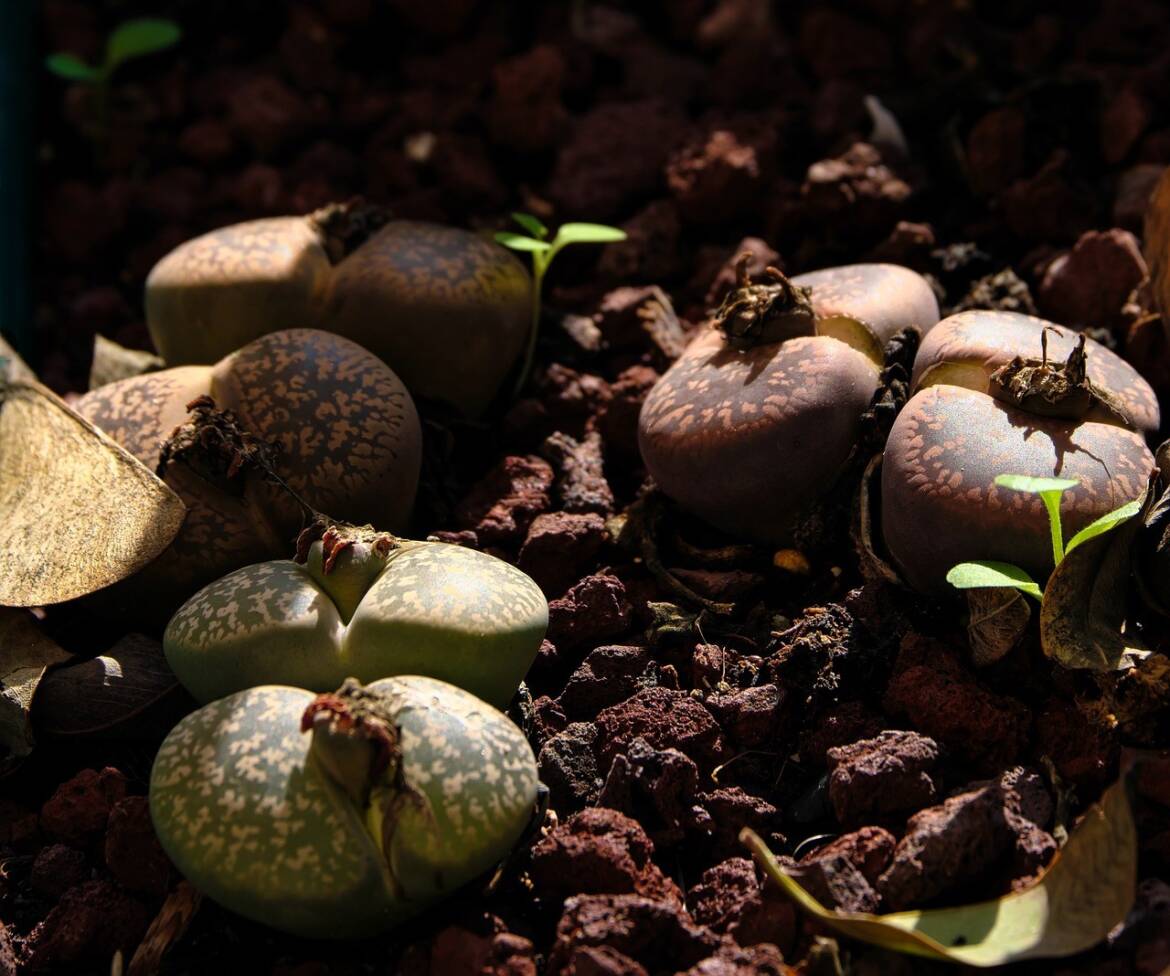Lithops: Pebble-like plants:
Lithops or lithops is a genus of succulent plants of the Aezooid family also called “living stones” and includes over 30 species. It is native to the wide area of southern Africa: Namibia, Botswana, South Africa. The name of the genus consists of two Greek words “lithos” and “opsi”.
Lithops are low-growing succulents that, as their name suggests, look like a stone, which is why they are called lithops (Lithops sp.). They impress with their simplicity, bright colors, while they also give us wonderful flowers. Abroad they are better known as “pebble plants” or “living stones”. Native to southern Africa, the stones have adapted their form as camouflage in the natural environment to protect themselves and not be eaten by animals. In recent years, stones are particularly diverse as indoor plants, for the living room of the house or in professional spaces, adding a modern tone to the decoration and without requiring a particular description. As we see in detail what care lithops need in order to keep them healthy and enjoy their unique beauty for many years.
What care do stones need and what is the right environment for them to grow?
Stones prefer sunshine and mild temperatures of 18-27°C, as in these conditions they grow better and show their flowering faster. They are sensitive to winter frost, below 10°C, as well as to high summer temperatures when they exceed 35°C. For planting lithops in the garden, we prefer light sandy soils that have a good strategy to remove excess water after watering. Their low temperatures and the minimal care they require, are particularly popular plants for the home.
How do we plant lithops in a pot?
For planting lithops in a pot on the balcony, we prefer west or east-facing spots, protected from severe frost and north winds. If we prefer to have lithops inside the house, we place them in bright places near a window that does not get direct sunlight and away from radiators. We choose shallow wide, 10 cm deep pots that have space to create unique compositions by choosing different types and qualities of stones. We plant the stones in pots that have a hole in the base to remove excess water, otherwise there is a risk that they will rot due to the humidity. We use a special plant for succulents that contains coarse sand, perlite, pumice and nutrients.
When do lithops bloom?
Lithops show their flowering from the end of summer and continue for the whole duration of autumn. They form large flowers in yellow or white color, of large size, with a diameter of up to 5 cm, which emerge from between the slits of the leaves. In many lithopa varieties, the flowers appear in the afternoon hours and then close in the evening hours.
How is lithopa propagated?
To create more lithops, we can propagate by planting seeds or by dividing plants when they have grown in a group. Because lithops are slow-growing plants, it will take several years to separate the plant group to form a plant group. More common is lithopa propagation by seed. And in this case, it will take a few months for the seeds to germinate and several years to reach full growth.
And a secret to protect lithops in the garden.
In order to enjoy beautiful lithops in our garden, we should take protective measures against the snails that can appear on the lithops leaves and destroy our plants.

